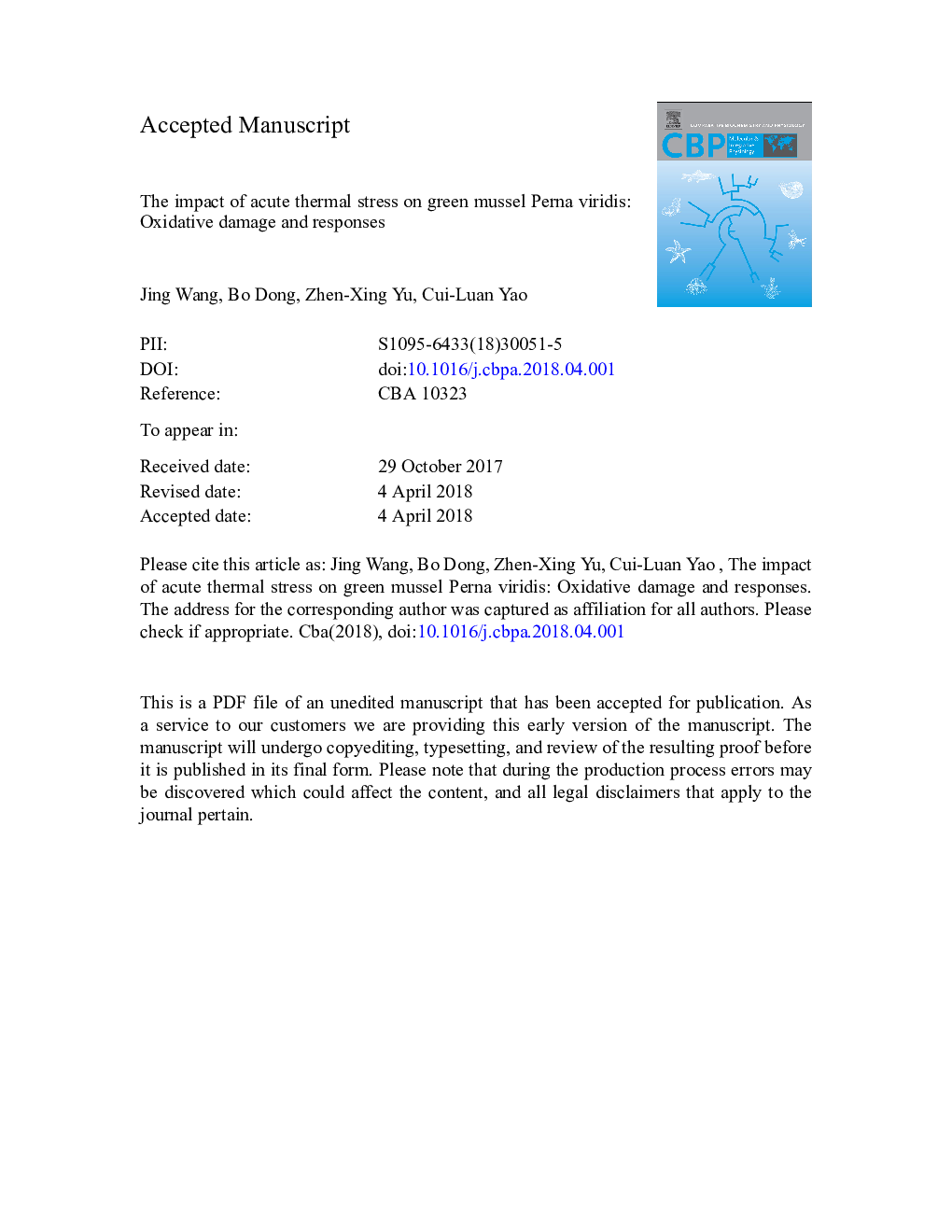| Article ID | Journal | Published Year | Pages | File Type |
|---|---|---|---|---|
| 8318129 | Comparative Biochemistry and Physiology Part A: Molecular & Integrative Physiology | 2018 | 35 Pages |
Abstract
Examining the physiological responses of mussels to thermal stress is crucial to evaluate their biogeographic distribution and ability to adapt to a changing climate. In the present study, we investigated the effects of acute cold (8â¯Â°C and 15â¯Â°C) and heat (35â¯Â°C and 42â¯Â°C) stress on the mortality rate, reactive oxygen species (ROS) production, malondialdehyde (MDA) content, mitochondrial membrane potential (MMP) and antioxdative responses in the gill tissue of the green mussel species Perna viridis. Our results showed that cold and heat stress induced a temperature-dependent increase in mortality rate. ROS production increased significantly (pâ¯<â¯0.01) after both cold and heat stress. However, the activities of antioxidant enzymes, including SOD, CAT and GSH-Px, were greatly enhanced only after heat stress. In addition, MDA content and MMP increased significantly under both cold and heat stress. The up-regulation of Hsp70 transcripts was only detected after acute stress at 35â¯Â°C. However, p38-MAPK phosphorylation levels increased after both cold and heat stress. In addition, a moderate activation of caspase-3 was found after mussels were exposed to 8â¯Â°C and 42â¯Â°C stress. Our results suggest that both extreme cold and heat stress could induce ROS production in the gill tissue of P. viridis, which might result in lipid peroxidation and mitochondria dysfunction. Antioxidative enzymes and Hsp70 might be important in the heat stress response of animals, whereas p38-MAPK might be crucial in the acute response to both cold and heat stress. However, caspase-3 activation might be very weak under both cold and heat stress.
Related Topics
Life Sciences
Biochemistry, Genetics and Molecular Biology
Biochemistry
Authors
Jing Wang, Bo Dong, Zhen-Xing Yu, Cui-Luan Yao,
